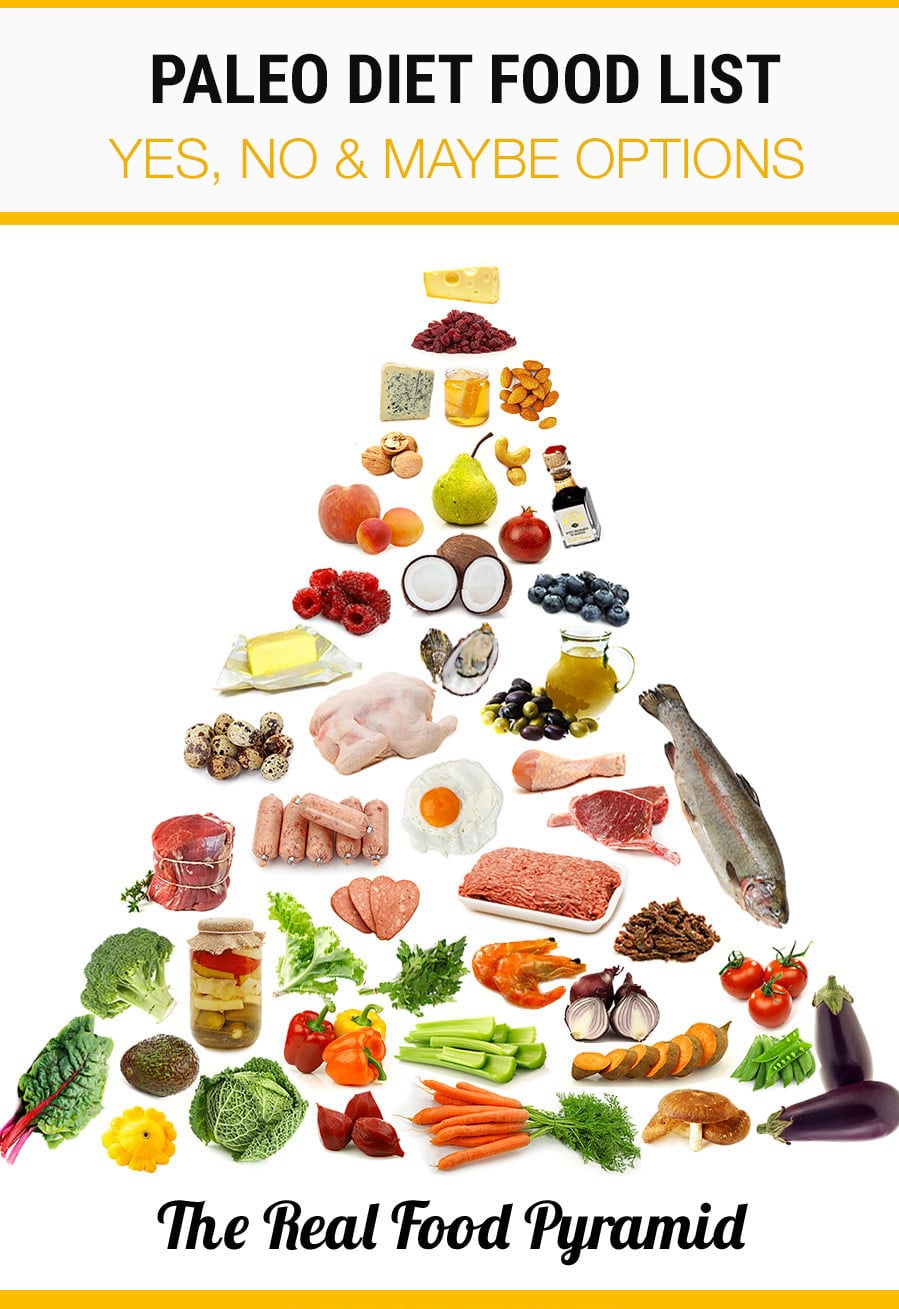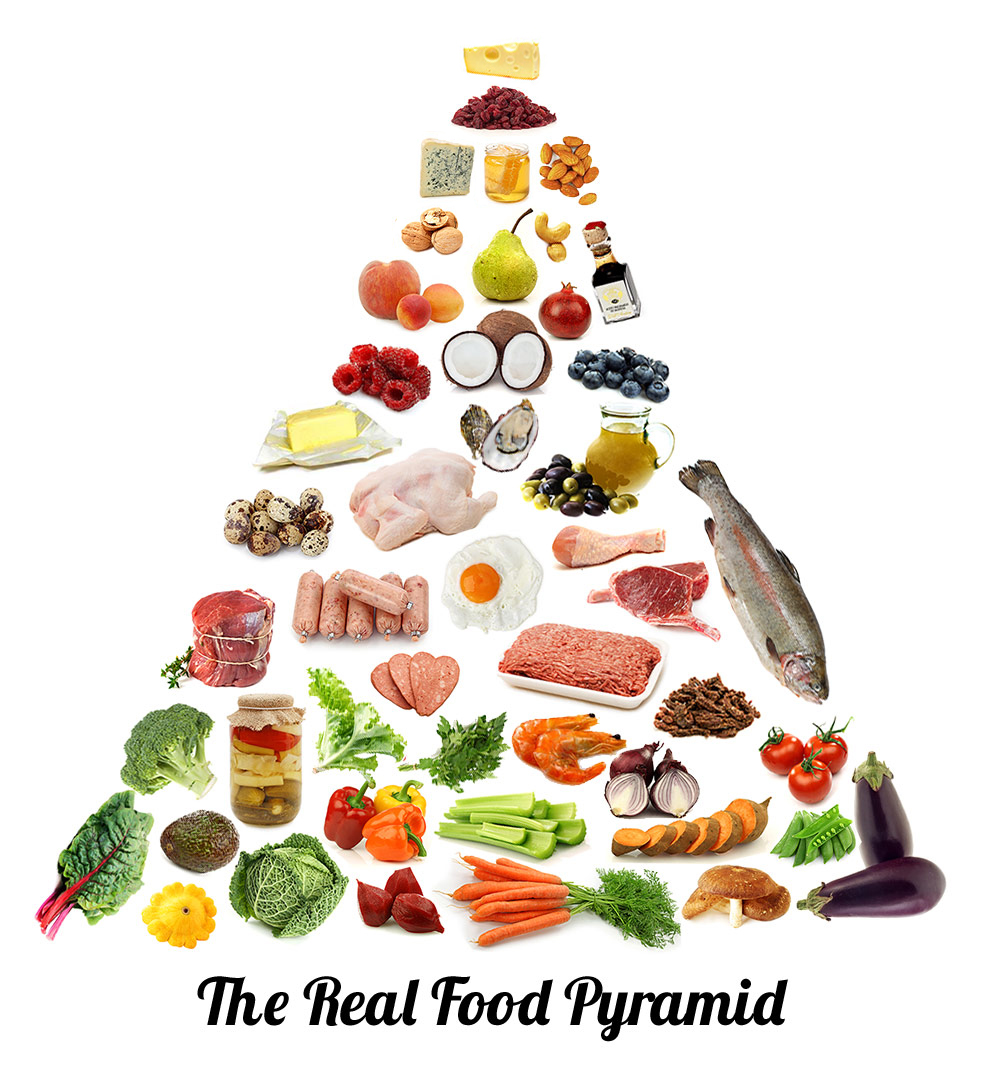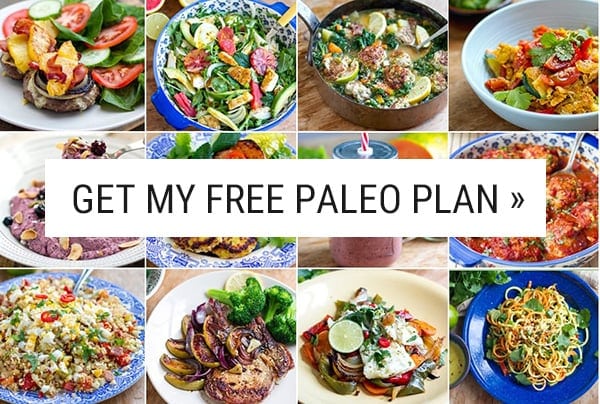Can You Drink Coconut Milk on Paleo Diet

In this article, I cover Paleo diet foods with a handy list of what to eat, what to avoid and what to enjoy occasionally. Plus, you can use this paleo food pyramid for quick, visual reference. Below you will find overview paleo diet rules: which foods to eat, which foods to avoid, what to consume in moderation.

ABOUT THE PALEO DIET
Paleo diet and lifestyle take inspiration and cues from our ancestors and the way we used to eat and live. It's not about re-enacting the caveman era; nobody runs around in loincloths and sets fires to cook their food (only occasionally). Paleo is about learning from ancestors but it is mostly fuelled by modern science and some common sense.
The paleo diet focuses on unprocessed, whole foods: healthy fats including saturated fat, grass-fed, free-range meat and eggs, lots of fish and seafood, even more vegetables, some fruit, berries, nuts, seeds and natural sweeteners.
It excludes grains, legumes, processed sugar and most dairy. Some people include healthy dairy foods like kefir, full-fat natural yoghurt, aged cheese and butter. That, of course, really depends on your sensitivities.
I love this way of eating because it also focuses on local, organic produce and good farming practices.
The paleo lifestyle also promotes healthier, more natural living: better sleeping habits, stress reduction and management, functional fitness and movement, adequate sun exposure, spending more time outdoors, avoiding environmental toxins and so on.
Above all, it's not a set of strict paleo diet rules. It's more of a framework that you can adapt based on your own goals, health, gender, age, location and current lifestyle. It's a very holistic approach to wellbeing. You can learn more about the paleo diet basics here.
Here is a summary of paleo diet foods (well, more like my personal Paleo food list):
Foods to eat on the paleo diet

- Meat and poultry (including offal) – grass-fed, free-range meat is not only a kinder and more ethical way to consume animal products but it is also much higher in nutrients because of the way the cattle were fed and raised.
- Fish and seafood – try to choose sustainable, wild fish and seafood when possible.
- Eggs – free-range, pasture-raised whenever possible.
- Vegetables – all non-starchy and starchy tubers and root vegetables. A caveat should be made about white potatoes, which some of you might want to eliminate for a period of time due to the high glycaemic index and some sensitivities you might have to nightshade vegetables. Having said that, it is real food and very nutritious so don't snub the spud.
- Fruit and berries – stick to low-sugar fruit and berries and keep high-sugar fruit like bananas and mangos for days when you need a higher carbohydrate intake or when in season and tasting delicious. For me personally, I eat most fruits and don't worry about the fructose because I am fairly active but there are days when I don't eat any fruit at all, so it balances out.
- Nuts and seeds – these guys are very nutritious but many nuts and seeds are high in omega-6 fatty acids which can be pro-inflammatory if consumed in large quantities and when your diet is not balanced by an equal amount of omega-3 fatty acids found in oily fish like salmon and sardines, eggs and leafy greens. Basically, don't gorge on buckets of nuts and seeds every day. The same goes for nut meals and flours such as an almond meal. Whenever possible, try to activate nuts and seeds by soaking and then dehydrating them back, which makes them easier to digest.
- Spices and herbs – go to town, the more the better! As for salt, use good quality sea salt or Celtic salt to get beneficial minerals and be sensible with it. I love spices and herbs so much, I wrote an e-Book about it.
- Healthy fats – coconut oil, coconut milk and cream, ghee (suitable for Whole30), butter (it's mostly fat so no big problems with lactose but might have to be out for some of you), duck fat, olive oil, avocado oil, macadamia nut oil, fish oil, sesame oil as well as from grass-fed meats, poultry and fish.
- Condiments – mustard, fish good, quality vinegar such as apple cider, aged Balsamic, olive oil mayonnaise, low-sugar tomato sauces and paste, anchovies, olives, gherkins, capers, salsas and pestos – are all fine, just make sure no nasty chemicals and preservatives are added. Wheat-free soy sauce such as Tamari and naturally derived oyster sauce are okay every now and again but it's better to try something like coconut aminos. You can make a lot of your own paleo sugar-free salad dressing and try my go-to paleo stir-fry sauce.
- For baking – nut meals, coconut flour, tapioca and arrowroot flour, sweet potato flour, chestnut flour, hemp seed flour, banana flour – use in moderation as some of these guys are either still high in carbohydrates or may contain high amounts of omega-6 fatty acids.
- Protein powder can be added in a form of a smoothie or as a post-workout snack, especially if you can't or don't want to consume too much meat or fish. I have a handy guide to paleo protein powders here.
Foods to avoid on the paleo diet

- Grains –especially wheat and anything with gluten. White rice is the least harmful of all grains and is added to dishes on occasions or for variety. It's also part of the Perfect Health Diet protocol, which is what I follow. Rice is very high in carbohydrates and if you're not active or trying to lose weight, it should be kept to 'occasional' use. Read more about the paleo diet and white rice here. And, learn more about why grains are avoided in the paleo diet here. Many people ask about oats and oatmeal, read about them here.
- Legumes – beans, lentils, chickpeas and so on. Cashews are not legumes! There are some debates over whether some legumes are safe to consume in moderation if prepared properly (soaked for 12 hours and then cooked really well to remove the phytic acid and make them easier to digest). You can read this article by Dr. Chris Kresser and this article by Dr. Loren Cordain and make up your own mind as I do. I include green beans and peas but avoid the rest.
- Refined sugars and carbohydrates – bread, pasta, cookies, white sugar, artificial sugar, high-fructose syrup, sodas, fruit juices and so on.
- Dairy –especially milk and low-fat dairy, and for those with damaged gut or gluten/lactose intolerances. If you're concerned about calcium intake on a paleo diet read this post.
- Processed vegetable oils and fats such as canola oil (rapeseed), soybean oil, vegetable (Is it really made from vegetables? We don't think so), and sunflower oils, as well as margarine and spreads made with such oils. Read this post on healthy cooking fats and oils here.
- Gluten-containing products
Consume on occasion & if tolerated
- Dairy should mainly be avoided, especially if you suffer from gut problems and gluten intolerances, but if you're in good health and have no sensitivities to lactose (sugars in milk) or casein (protein in milk) then a little healthy dairy can go a long way. Avoid cow's milk as it has a high glycaemic Index, unlike cheese or yoghurt. Better options are goat's and sheep's milk products, A2 cow's milk and cow's milk fermented products like kefir, unsweetened yoghurt, aged cheeses, full-fat cream, butter, and ricotta.
- Natural sweeteners – honey, maple syrup, molasses, dried fruit, dark chocolate, palm sugar, rice malt syrup for those avoiding fructose.
- Alcohol – dry wines, clean non-grain based spirits.
- Fermented soy such miso, tempeh in small amounts, wheat-free soy sauce
- Pseudograins like quinoa, amaranth and buckwheat are less harmful but they are still dense sources of carbohydrates and contain similar antinutrients to grains. They should be prepared carefully to remove some of the anti-nutrients such as phytic acid. Soak such grains in salted water for 8-12 hours, rinse and then cook well before consuming. Chia seeds also fall in this category. Buckwheat is the safest out of these, read about it here.
- Fresh corn, green beans and green peas fall into grain/legume category but in my eyes, they are totally fine to use every now and then and especially when in season and local. Read whether you could include green peas in the paleo diet here.
- White rice is often added back in as it seems to be the least problematic grain for most people. Find out if you should add white rice to your paleo diet here.
Need some help with paleo shopping? Check out our ultimate paleo shopping list here. Not sure what Paleo is all about? Read about the paleo diet here.
Feel like you still don't know where or how to start? Looking for a plan or program to help you reset and recharge? Check out my free paleo program here.

Additional reading on Paleo nutrition
Eat Drink Paleo Cookbook by Irena Macri
Optimal Health The Paleo Way by Claire Yates
The Perfect Health Diet by Paul Jaminet & Shou-Ching Jaminet
The Paleo Cure by Chriss Kresser
The Paleo Solution by Robb Wolf, a must-read!
Practical Paleo by Diane Sanfilippo

Can You Drink Coconut Milk on Paleo Diet
Source: https://irenamacri.com/paleo-diet-food-list/